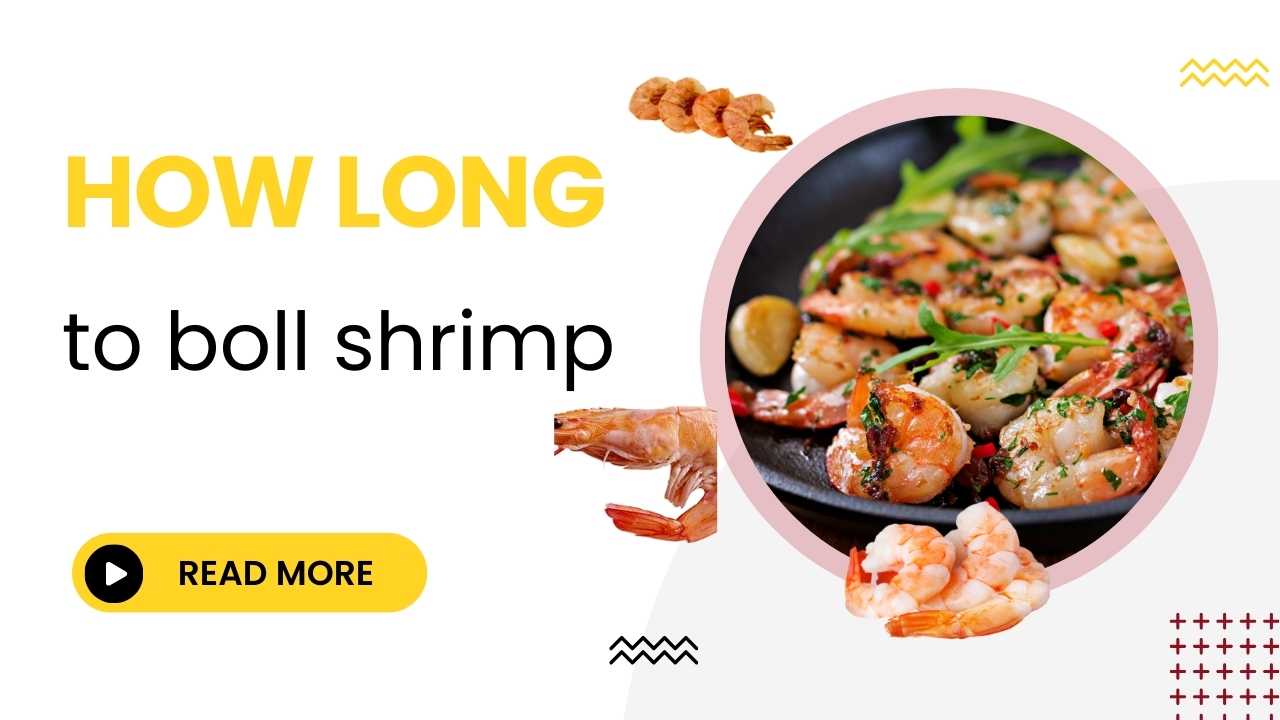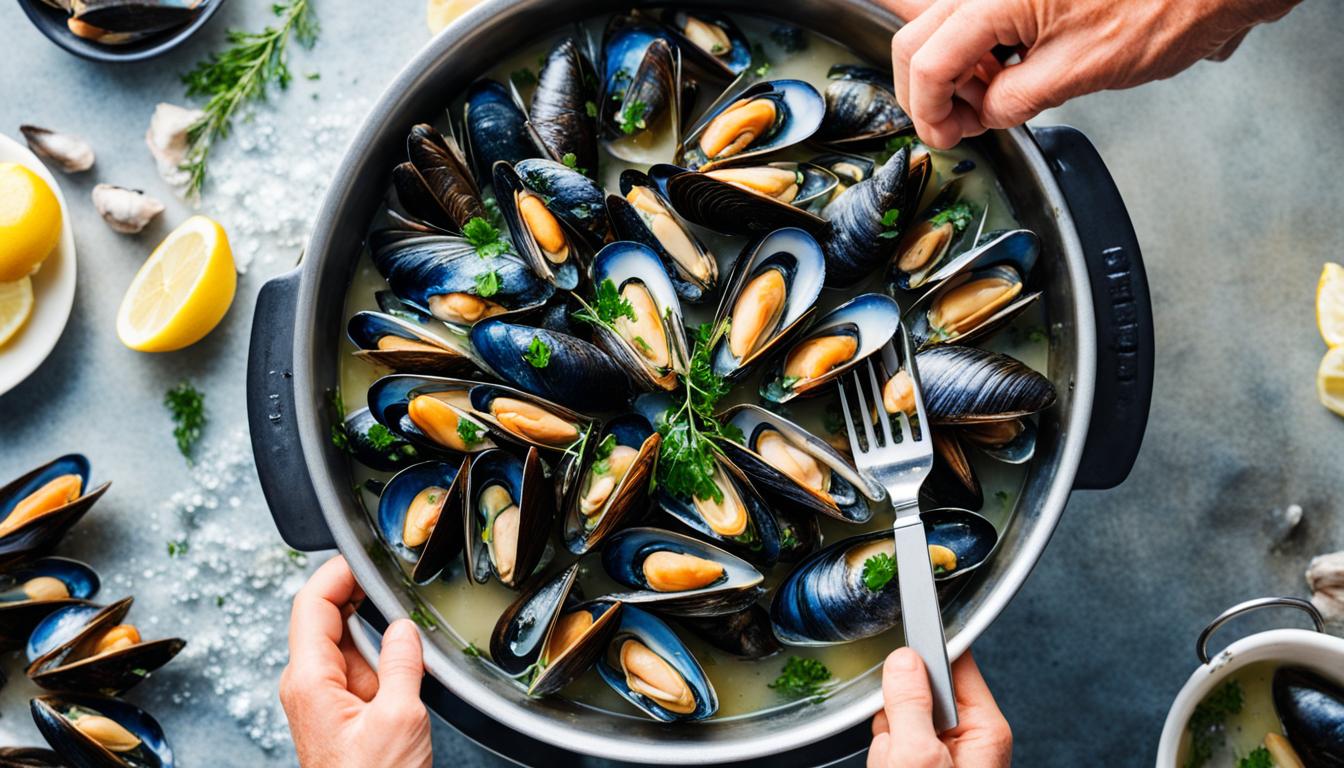Boiling shrimp is one of the simplest and quickest ways to cook this delicious seafood. The cooking time for boiling shrimp can vary depending on the size of the shrimp and whether they are fresh or frozen. This guide will help you determine the optimal boiling time to achieve perfectly cooked shrimp every time.
Read More: Is shrimp good for men?
Factors Affecting Boiling Time
Several factors can influence how long you should boil shrimp:
- Size of Shrimp: Shrimp are typically categorized by count per pound, with larger shrimp requiring more time to cook.
- Small shrimp (51-60 count per pound): Less time
- Medium shrimp (41-50 count per pound): Moderate time
- Large shrimp (31-40 count per pound): More time
- Jumbo shrimp (21-25 count per pound): Most time
- Fresh vs. Frozen: Fresh shrimp usually cook faster than frozen shrimp that have been thawed.
- Shell On vs. Shell Off: Shrimp with the shell on may take slightly longer to cook compared to those that have been peeled and deveined.
Boiling Times for Shrimp
Here is a general guideline for boiling shrimp based on their size:
- Small shrimp (51-60 count per pound): 1-2 minutes
- Medium shrimp (41-50 count per pound): 2-3 minutes
- Large shrimp (31-40 count per pound): 3-4 minutes
- Jumbo shrimp (21-25 count per pound): 4-5 minutes
Step-by-Step Instructions for Boiling Shrimp
- Prepare the Shrimp:
- Thaw frozen shrimp by placing them in a colander and running cold water over them until fully thawed.
- Peel and devein shrimp if desired, leaving the tails on or off according to your preference.
- Boil the Water:
- Fill a large pot with water and add a generous amount of salt (about 1 tablespoon per quart of water).
- Optional: Add flavorings such as lemon slices, bay leaves, garlic cloves, or Old Bay seasoning to the water for extra flavor.
- Bring the water to a rolling boil.
- Cook the Shrimp:
- Add the shrimp to the boiling water.
- Start timing as soon as the shrimp hit the water.
- Monitor the Shrimp:
- The shrimp will begin to turn pink and opaque as they cook.
- Stir occasionally to ensure even cooking.
- Check for Doneness:
- Shrimp are done when they are pink, opaque, and curled into a loose “C” shape.
- Be careful not to overcook, as this can make the shrimp rubbery.
- Drain and Chill:
- Once the shrimp are done, immediately drain them in a colander.
- Transfer the shrimp to an ice bath (a bowl of ice water) to stop the cooking process and cool them quickly.
- Drain again and pat dry with paper towels.
Tips for Perfect Boiled Shrimp
- Use Fresh Ingredients: Fresh shrimp and aromatic seasonings will enhance the flavor of your boiled shrimp.
- Avoid Overcooking: Boiled shrimp cook quickly, so keep a close eye on them to avoid a rubbery texture.
- Seasoning the Water: Adding seasonings to the boiling water can infuse the shrimp with extra flavor.
Common Mistakes to Avoid
- Overcrowding the Pot: Boil shrimp in batches if necessary to ensure even cooking.
- Not Using Enough Salt: Salting the water enhances the natural flavor of the shrimp.
- Skipping the Ice Bath: Cooling the shrimp quickly in an ice bath prevents overcooking and ensures a firm texture.
Conclusion
Boiling shrimp is a straightforward method that yields delicious, tender seafood in just a few minutes. By paying attention to the size of the shrimp and using the appropriate cooking time, you can achieve perfect results every time. Whether you’re preparing shrimp for a cocktail, salad, or main dish, boiling is a reliable and efficient cooking method.
FAQ on Boiling Shrimp
Q1: How can I tell if boiled shrimp is done? A1: Boiled shrimp are done when they turn pink, opaque, and curl into a “C” shape. They should feel firm to the touch but not rubbery.
Q2: Can I boil shrimp with the shell on? A2: Yes, you can boil shrimp with the shell on. It may take slightly longer to cook, but the shells can add extra flavor.
Q3: Should I devein shrimp before boiling? A3: Deveining is a personal preference. It can improve the texture and appearance of the shrimp, but it’s not necessary for all recipes.
Q4: How do I store leftover boiled shrimp? A4: Store leftover shrimp in an airtight container in the refrigerator for up to 3 days. Use them in salads, pasta, or as a protein addition to various dishes.
Q5: Can I add other ingredients to the boiling water for flavor? A5: Yes, adding ingredients like lemon slices, bay leaves, garlic, and seasoning blends can infuse the shrimp with additional flavor.


